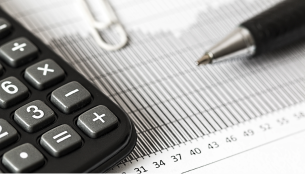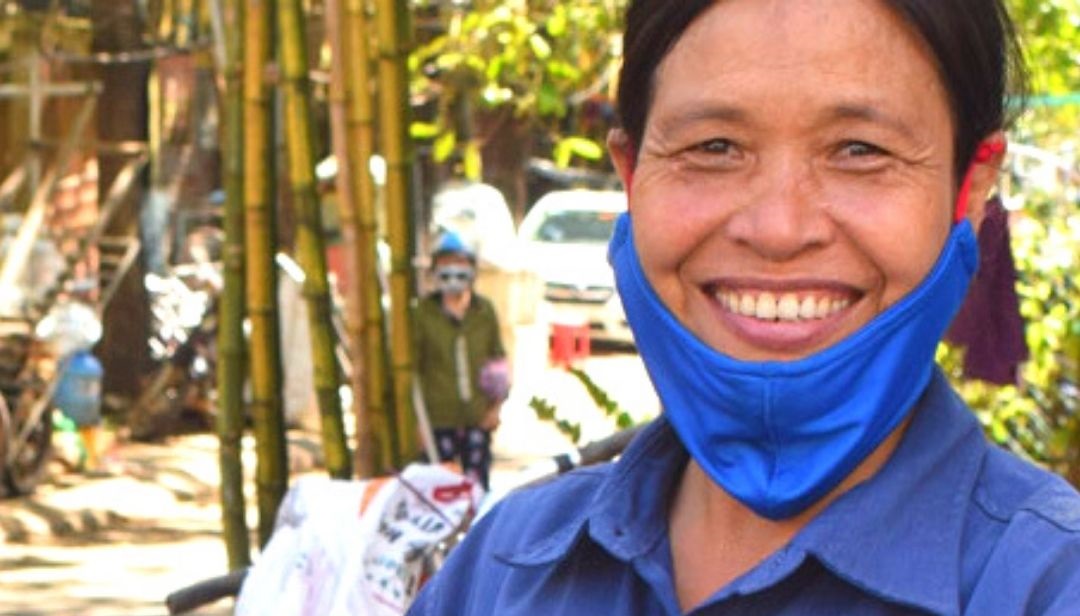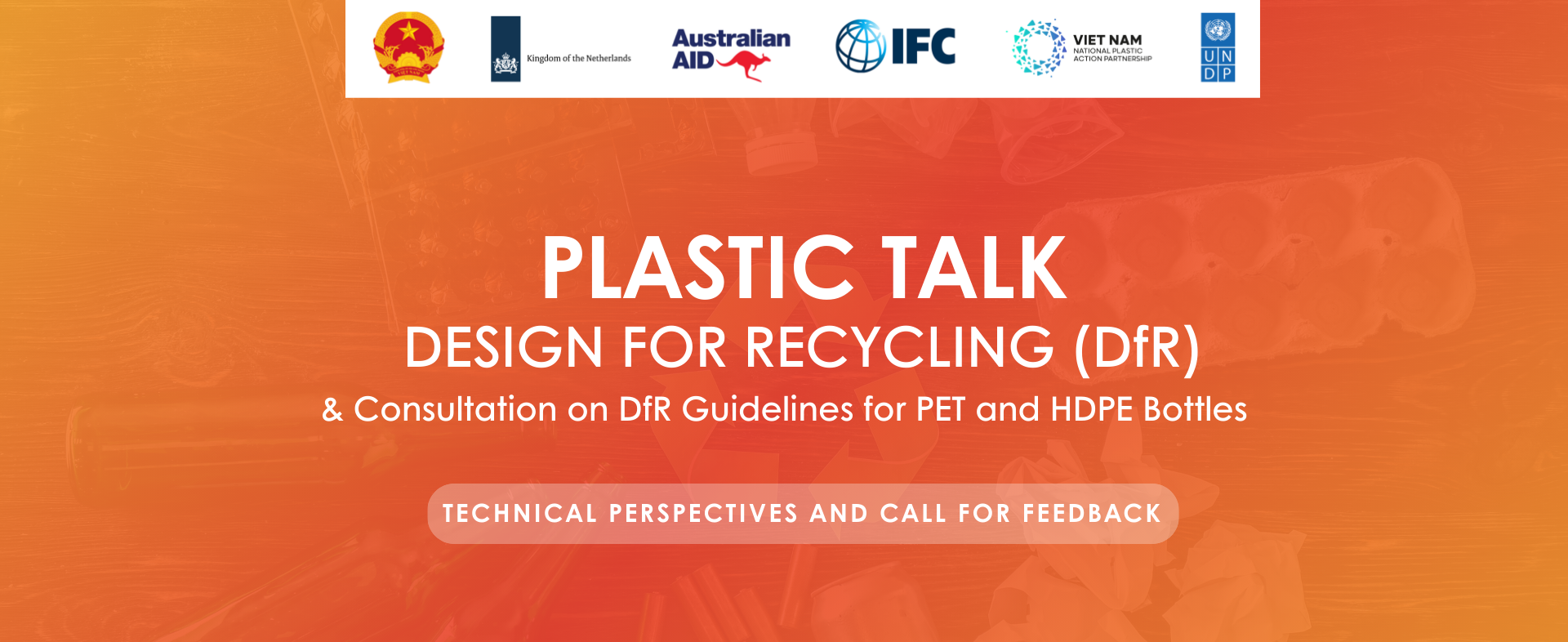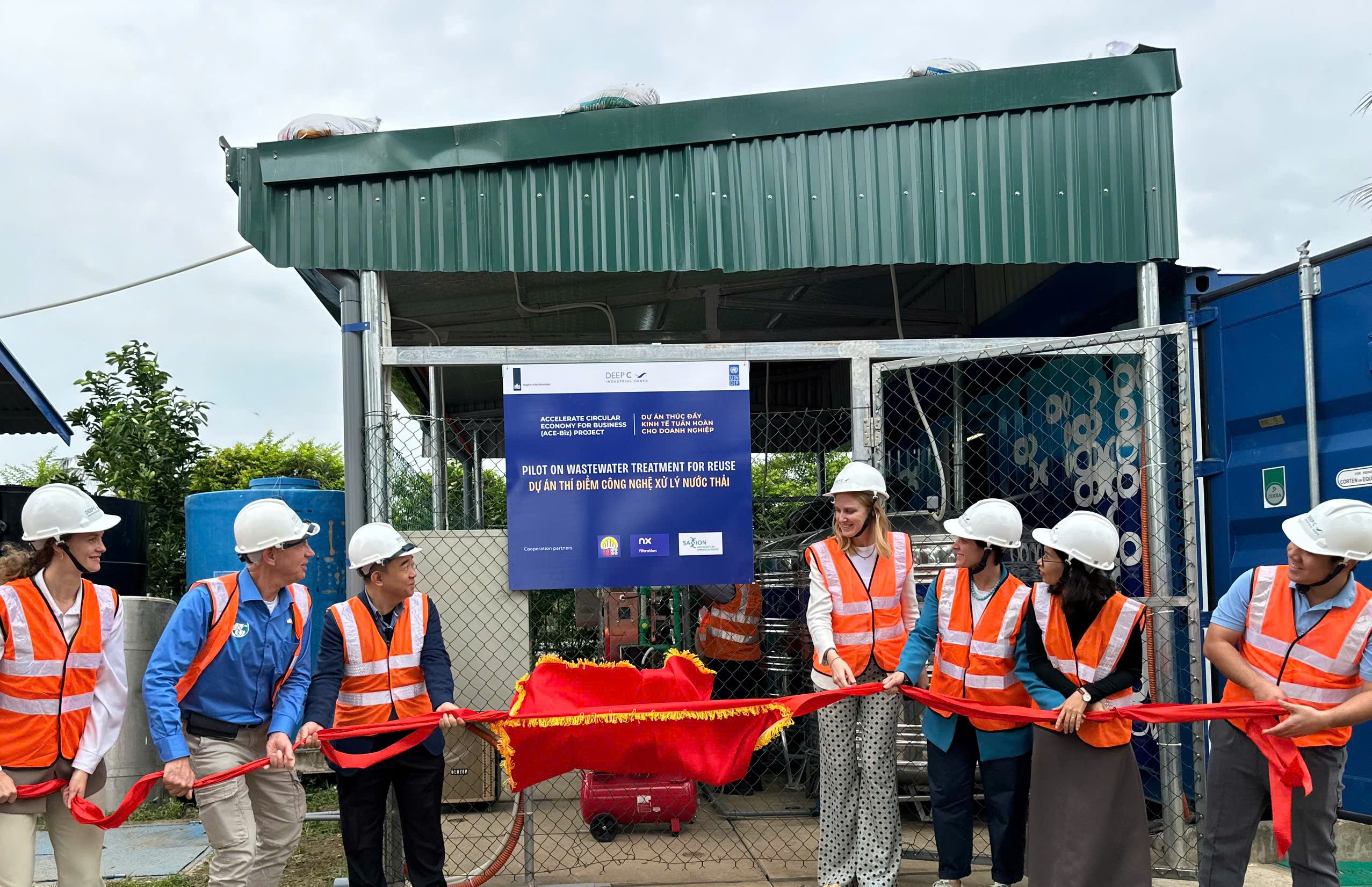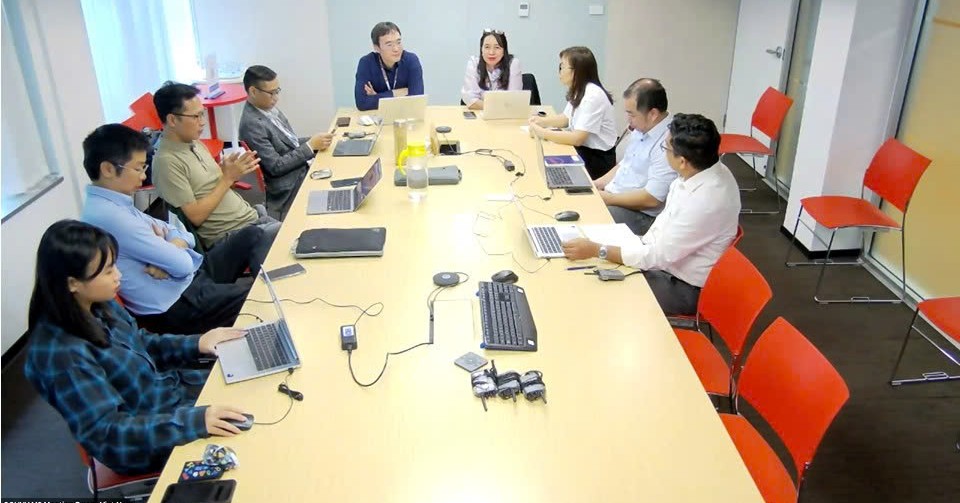- Conception of circular economy and the role of law in transforming and promoting circular economy
Early ideas about CE are believed to have emerged in the mid-18th century in the field of agriculture, but it was not until the end of the 20th century that it became an economic category that refers to the new economic model – as opposed to the traditional economic model linear economy. The concept of CE (circular economy) was first formally used by Pearce and Turner, referring to the economic model based on the basic principle that “everything is an input to something else”[2]. If linear economics develops in a straight-line model with the beginning of resource extraction and the end of waste into the environment, leading to resource depletion and environmental pollution, CE develops in a circular model, connecting the end of one cycle with the beginning of another cycle to become a cycle of material, keeping it in use for as long as possible, thus limiting waste and minimizing adverse impacts on the environment. In 2018, the European Commission (EC) issued a general definition of CE as maintaining the value of products and materials for as long as possible in the economy and limiting waste[3]. In 2020, the United Nations Environment Programme (UNEP) offered a similar definition: CE is where the value of products, materials and resources is maintained in the economy for as long as possible and at the same time waste is minimized”[4]. Thus, so far, the general concept of CE is quite unified, including the main contents, which are: (i) CE is built on the philosophy of Regeneration and Restoration; (ii) CE is not just about waste disposal but about “designing waste”, there is not even a concept of waste in CE[5]; (iii) CE is not only about circulating materials, but also about minimizing the use of materials that are difficult to recirculate (glass chips, toxic chemicals, waste plastics that are difficult to recycle,…); (iv) CE is not a goal but an approach, a path towards sustainable development[6].
Along with the process of moving towards a common awareness of CE concepts and contents, scientists and countries around the world also pointed out barriers, motivating factors and methods and solutions to accelerate the transition to CE platform. The law as a state management tool was soon identified and identified as both a major barrier, a strong motivating factor and also an inclusive solution to shift the economic model towards circularity.
According to the study by Freek van Eijk (2016) which compiles some of the world’s studies on the types of barriers of CE, has identified 13 main barriers that countries often face when transitioning to CE such as politics, culture, law (institutions), finance, information, technology solutions, human resources, scale limits, vision…, in which, law and culture are the two biggest barriers[7]. Meanwhile, Jonas Grafstrom and Siri Aasma (2021)[8] point to four main barriers affecting the implementation and development of the CE model, namely technology, market/economy, institutions/law, and society/culture. In particular, the sphere of influence of institutional/legal factors is inclusive (See Diagram). At the CE Promotion Forum in 2018 organized by the World Economic Forum, the World Resources Institute, the Ellen MacArthur Foundation, the United Nations Environment Programme and more than 40 partners, building institutions to remove barriers to promote CE is 01 of 03 major initiatives, along with strengthening mixed financial models and promoting public-private partnerships. In another study, N. H. Nam and N. T. Hanh (2019) also affirmed the role of the law and said that improving the law is the first solution chosen by countries to implement CE[9]. Thus, it can be affirmed that the law has an important and inclusive role in recognizing and promoting CE development.

Diagram: Barriers affecting the conduct of the CE model. The green arrow indicates the closed cycle as desired, the red arrow indicates the current cycle and obstacles.
- Circular economy legislation in some countries around the world
So far, many countries have issued legal documents on CE and accordingly, the content of the provisions of the law on CE is also becoming more and more detailed and complete. It is possible to generalize through major policies and outstanding results as follows:
-In Europe
European Union: CE is defined as more than just a waste issue. Therefore, although it was expected to adopt the Legislative Proposal on Waste in 2014, the European Commission paused and replaced it with the Circular Economy package (CE) in 2015 to approach the broader issue, taking care of all economic processes. from the production and consumption of secondary raw materials market. Next, the Bloc implemented the EU Action Plan for the Circular Economy (CE) and ecodesign Working Plan 2016-2019[10]. These Plans specify the need to approach CE implementation in 4 stages/stages of the product life cycle, including: (i) Production, with special attention to design (Redesign); (ii) Consumption; (iii) Waste Management; (iv) Turn waste back into resources (Secondary Raw Materials). At the same time, 6 priority areas for CE implementation were identified: Plastics, food waste, critical raw materials, construction and demolition, biomass fuels and biological products[11]. As for plastic waste, on 27/3/2019, the European Parliament agreed on ambitious measures to treat marine waste from the 10 most common single-use plastic products found on European beaches, as well as discarded fishing gear and compostable plastic[12]. The EU has issued various documents on CE, which can be generalized into 6 major policy groups: (1) Continue to apply standard designs and rules of application to CE at the EU level such as specifying the responsibilities of stakeholders in the CE cycle or establishing and disseminating EU CE standards for durability, repairability and recyclability of products; (2) Expanding procurement in accordance with the CE of the EU and member states such as: prioritizing the purchase of recirculating products; regulate procurement standards through thresholds for percentage of recycled content, reusability and ecological efficiency; or expand public procurement under CE to create a circular product market; (3) Tax changes for CE products such as: VAT reduction for CE products and VAT increase for Linear Economy products; corporate tax relief for CE participating companies; (4) Liberalization of waste business such as reducing legal barriers to waste trade and use, prioritizing “Green Listed Waste”; (5) Facilitate the development of circular trading platforms; (6) Formation of eco-industrial parks; (7) Open CE platform promotion and marketing campaigns; (8) Establish a global material flow accounting database[13].
Germany: CE is implemented in a “top down” model. Since 1996, Germany has enacted the Law on Waste Management and Closed Cycles[14] with the core idea of material circulation. They are aware that Germany’s heavy industry economy always needs a lot of input materials, so the circulation of materials will help reduce dependence on resources, while ensuring the long-term sustainable development of the whole economy. This Act aims to manage waste in a closed cycle and ensure environmentally compatible waste disposal as well as the ability to assimilate waste. Since then, Germany has approached ce implementation at the national level, promoting many models of waste reduction, reuse, recycling and incineration to produce electricity and heat. Even if it comes to recycling policy alone, Germany has had the Verpackungsverordnung [15] since 1991[16]. In addition, Germany develops very specific energy, industrial and environmental policies at the national level and plays a very strong role in these areas at the European level.
Netherlands: In 1970, the “Lansink ladder” stipulated the order of priority in waste management, prioritizing the prevention and limitation of waste generation, promoting reuse and recycling, followed by the disposal of garbage by incineration before applying the final measure of landfill. In 2013, the Netherlands launched a series of programs and projects aimed at making it the “circular center” of Europe. In particular, the program “Circular Economy in the Netherlands by 2050” offers visions, roadmap orientations and very specific goals of this country. Accordingly, the 5 priority areas are: Biomass fuel and food, plastics, manufacturing (focusing on metal materials and toxic chemicals), construction (focusing on recycling building materials and developing the recycled materials market) and consumption. However, unlike Germany, the Dutch way of implementing CE is considered “bottom up”. In this country, CE is associated with businesses, promoting innovation in the use of materials, changing business models, stemming from the interests and initiatives of enterprises. Accordingly, the Ministry of Economy of the Netherlands since 2008 has adopted policies to promote the formation of markets for material circulation, such as regulations on public consumption for recycled products and circular services[17].
France: The CE Roadmap was developed in 2017, issued in April 2018, with the goal of halving the amount of waste to be landfilled and recycling 100% of plastic waste by 2025. Accordingly, there are 50 measures to promote the transition to CE, related to production, consumption, waste management and community participation. Since then, French businesses have responded strongly, typically the establishment of the Textile Recycling Valley in the north of France, aiming to recover 50% of waste fabrics and recycle 95% of them by 2019. Renault’s manufacturing plant in Choisy-le-Roi south of Paris also carries out the remanufacturing of automated equipment, material circulation and zero landfill waste[18].
Sweden: as one of the leading countries in the world in implementing CE development through waste treatment and recycling, it has adopted a unified recycling policy nationwide. Since 2011, much of the country’s waste has been disposed of, with less than 1% of household waste going to landfills. As a result, Sweden has become one of the few countries to maintain a balance in the process of industrialization, with the rate of economic growth continuing to increase with reduced emissions. Sweden’s per capita greenhouse gas emissions are among the lowest in the EU and OECD countries. In 2013, Sweden’s greenhouse gas (GHG) emissions were just 55.8 million tonnes of CO2 compared to 71.8 million tonnes in 1990 – a 22% drop, while GDP grew by 58% during this time.
– In the Americas
Canada: The National Zero Waste Council was established in 2013 with the aim of bringing together leaders of cities, businesses, universities and NGOs to promote emissions prevention and promote a shift to CE. In 2018, from the principles and orientations of this Council, the National Plastic Zero Strategy was launched by Environment and Climate Change Canada (ECCC) and Health Canada (HC) to recover all plastic in the economy, avoiding emissions into the environment by implementing CE. The Council has been supporting to improve the quality of life, bring environmental sustainability and prosperity to the economy, reduce the consumption of resources and energy, with specific action plans to prevent waste generation.
United States: Many models are formed on the basis of Market-Based Approaches (MBAs) with the basic policy of non-state, other market actors such as enterprises and organizations with legal status are free to participate in business, supply goods, services (including goods and services on environmental protection and resource management, responding to climate change) according to the law of supply and demand of the market. In particular, the market approach encourages behaviors through market signals rather than state guidelines and directives. This policy encourages circular initiatives and replicates good circular patterns. Colorado’s e-waste market is a prime example of this approach to CE implementation. In 2013, landfilling of e-waste was banned in Colorado. Immediately appeared businesses collecting and recycling e-waste. Thus, a market with buyers being households and sellers being companies providing services has been formed. As a result, the environment is protected, society has more jobs, the State does not have to spend money on pollution caused by e-waste and waste is recirculated for treatment[19]. The fact that similar markets are constantly forming has made waste collection and disposal a vibrant and profitable field for investors in the US, from which famous garbage billionaires such as Wayne Huizenga of Waste Management and Maria Rios of Nation Waste emerged. In addition, some US cities have also developed and issued a “Zero Waste” Strategy with the goal of zero waste in the environment by 2030. Cities will have to shift from an existing cost-based approach to a resource management-based approach, treating waste as an asset that needs to be managed, rather than just exercising liability. Since then, roadmaps have also been set, associated with very specific policies, such as promoting public-private cooperation, food waste management, wastewater collection and treatment, recycling construction waste, setting up facilities for donation and recycling,[20]…
-In Asia
Japan: Considered an example of the CE approach at the broadest level, since 1991, Japan has begun to develop legal regulations to make the country a “recycling-based society”, broadly understood as a circular society with CE as a part. Through 04 versions in 2002, 2008, 2013 and 2018, the Basic Law on building a society based on recycling[21] has been increasingly improved, with many ce promotion policies amended and supplemented. (ii) strengthening upstream actions; (iii) expanding the use of recycled materials, designing for the environment, modeling using 3D technology, etc.; (iv) promotion and evaluation of CE-related business. At the same time, Japan focuses on 04 areas: (i) For the plastic sector, the Plastic Strategy is issued with the goal of reducing the use of single-use plastic boxes, packaging and items to reduce environmental impact; collecting and recycling used or unused plastics thoroughly and effectively; enhancing the practicality of bioplastics and promoting pushing the use of alternatives to fossil fuel-derived plastics. (ii) For the biomass sector, the National Campaign is issued with the objective of reducing food waste, measures to combat inappropriate food waste recycling and efforts towards proper food recycling. (iii) For the metal sector, the Tokyo Metal Project 2020 was promulgated with the goal of promoting the collection and recycling of small household appliances. (iv) For stone and building materials, the overall objective is to reduce construction and demolition waste by extending the life of construction works. Thanks to synchronous regulation, Japan has quickly achieved the world’s highest recycling rate. In 2007, only 5% of waste had to be disposed of by landfill, compared to 48% for the UK in 2008. Since 2010, the recycling rate for metals has been 98%. Japan’s 2014 Equipment Recycling Law ensures that over 50% of electronic products are recycled, compared to 30%-40% in Europe[22]. More importantly, between 74% and 89% of the materials contained in electronic products have been recovered, returned for the purpose of manufacturing products of the same type, resulting in cost savings and reduced dependence on resource extraction[23]. It can be said that Japan has expanded the philosophy of “regeneration and restoration” very far, not only in the economy but also in the whole society, with a very high level of technology[24].
China: The Circular Economy Promotion Law was passed in 2008, effective in 2009[25]. In 2017, the CE Policy Program was promulgated with the expansion of the responsibilities of manufacturing enterprises in saving energy and using renewable raw materials. In 2018, China and the European Union signed a memorandum of understanding on CE cooperation. In 2019, intercontinental cooperation including 200 enterprises of countries around the world and of China committed to CE on plastics… The CE platform in China is built according to a specific roadmap, from defining development concept to CE development goals, through a legal system that is mandatory for businesses. The Actions of the Government have in fact created a strong impetus for the development of CE. Along with that, China builds 3 levels to develop CE including: small cycle (implemented at the scale of factories and industrial parks); medium cycle (more scaled up) and large cycle (implemented across the entire economy). In addition, China also proceeds to build national eco-industrial parks for waste treatment and reproduction. According to calculations, CE could make goods and services more affordable for urban dwellers, reducing greenhouse gas emissions by 23% and traffic congestion by 47% by 2040. Statistics show that in the period 1980-2010, China’s economic scale expanded 18 times, but energy consumption only increased 5 times. This is one of the positive achievements that makes this world’s second most populous country continue its efforts to promote CE development in the coming time.
Taiwan: In 1974, the country passed the Waste Disposal Act[26], in 2002 the Resource Recycling Act, and in 2013, on the basis of the consolidation of these two acts, the Resource Recycling and Reuse Act was passed to support the development of CE by introducing actions based on the four pillars of green growth. including: laws/regulations, market incentives, innovation and connectivity[27]. Not stopping, in 2017, the Forward-Looking Infrastructure Development Program was launched, in which green energy infrastructure and water environment are related to CE. To date, Taiwan’s key policies and actions include: (i) Transforming the Environmental Protection Agency into the Ministry of Environment and Natural Resources to integrate the protection of protection. survive and use different resources more efficiently; (ii) Expand the 3R management strategy (reduction, reuse, recycling) to 6R (additional 3R is energy recovery, land reclamation, and redesign). The three objectives of the current period include: (i) “source reduction” by 2020 to prioritize the use of recyclable or renewable materials in production, consumption, waste treatment and secondary raw material markets; (ii) “green production consumption” by 2030 will impose a certain percentage of recyclable or renewable materials in the production, consumption, waste management and secondary materials markets; (iii) “circulation of all matter” by 2050[28].
- Some proposals to develop and improve the law on circular economy in Viet Nam
In Viet Nam, the CE model was first legislated in the Law on Environmental Protection in 2007. Resolutions of the XIII Congress of the Party and the Law on Environmental Protection in 2020 continue to recognize and uphold the role of CE and affirm as one of the country’s development orientations for the period 2021-2030. Therefore, the continued development and improvement of the law on CE is necessary to create a specific, complete and effective legal framework for the promotion of CE. A scientific, comprehensive and appropriate approach to CE, on the role of law in promoting CE, will create a unified basis for awareness and action. Although there is no universal model for all countries, the CE view is not a goal but an approach, a path towards sustainable development, showing inclusivity and inclusivity.
Firstly, CE is comprehensively reviewed at all levels, in all stages and all economic activities, where the State plays a tectonic role and business is the central driving force. The State creates an environment for the CE model to be operated and developed; in particular, the development of the right legal framework is an inevitable requirement. Through the law, the State renews the model of in-depth economic growth, effectively uses input resources, applies science and technology to industries, especially waste treatment to regenerate new raw materials; specify the responsibilities of manufacturers and distributors in recovering, sorting and recycling or paying the cost of disposal of waste products based on the number of products sold on the market; manage the project according to the life cycle, establish a roadmap for the development and application of environmental regulations and standards…; set out a roadmap to replace fuels, products using hazardous materials, single-use products with environmentally friendly fuels and materials, multi-use products, extending the useful life of products. At the same time, the State should focus financial, technological and human resources on the implementation of the transition to CE; in which, prioritizing financial resources to support enterprises to transform production methods and ce development must be associated with scientific innovation and access to advanced technology, in the context of Industrial Revolution 4.0; soon build a team of good experts, to solve problems well, from the beginning to the end of the whole process … Together with the State, the business community and the people need to raise the awareness of producers and consumers about their responsibility for products throughout their life cycle; focus on investing in modern and environmentally friendly technologies in production activities; consider solving the problem for short-term benefits or accepting to go slower to accelerate in the future.
Secondly, it is necessary to soon develop and promulgate a legal document with high legal effect, focusing and comprehensive regulations on CE development issues. Although the Party’s XIII Congress document and the Law on Environmental Protection in 2020 have general provisions on ce model development, but because this is a new economic model, the transformation faces many difficulties and challenges, so it is necessary to have a comprehensive system of policies and promotion tools, synchronously, with specific roadmaps, goals, tasks. If countries promulgate a separate law or a national strategy and action plan on CE, in our country, a thematic resolution of the National Assembly on ce promotion is the optimal solution, or at least a Government Decree on this issue. Along with that, because CE is related to many different industries and fields, it is necessary to review all relevant legal documents to amend, supplement and ensure uniformity and synchronization.
Third, in order to transform and promote CE, it is necessary to have a synchronous and effective system of policies and tools. CE is the new economic model and to develop this model requires policies and tools to promote it. The United Nations Trade and Development Organization (UNCTAD) outlines policies and tools to promote the adoption of the CE model, including:
| Orders and inspections | Economic | Public-private partnerships |
| Landfill and waste exchange standards | Landfill and/or waste incineration taxes | Strengthening infrastructure and logistics |
| Minimum recycling requirements | Tariffs on reusable or recycled products | Cyclic labeling and recognition systems |
| Deposit return system, e.g. for plastic bottles | Reduce VAT on repair and reuse services | Expand producer responsibilities |
| Public circulation regulations | Increase tariffs on products that cannot be repaired | Discounts on circulatory efficiency |
| Extended legal guarantees | Shifting taxes from labor to consumption | Products designed for recycling |
| Leasing and recirculating sharing regulations | Out-of-possession incentives | Digital platform for shared assets |
Source: UNCTAC, 2018, Circular Economy, Policy Brief, No 61.
Fourth, it is necessary to develop a roadmap for CE transformation and development in Viet Nam. According to the experience of countries, this roadmap is usually 15-20 years long, clearly stating common goals and priority goals for each small 5-year divergence, defining the role of stakeholders. The CE roadmap should also be associated with conditions to ensure implementation. In the current period, countries are prioritizing material recovery and limiting waste that is difficult to recycle, and at the same time, there are solutions to the trend of shifting resource demand when implementing CE. This priority is also suitable for Viet Nam when plastic waste and plastic bags account for about 8% – 12% of domestic solid waste and it is forecasted that the amount of waste in our country will double within the next 15 years.
Fifth, it is necessary to develop a database system on CE for the management and adjustment of CE implementation. The CE data is not only a collection of information on good circular patterns or initiatives to review and replicate, but also includes important data, which helps to track the level of circulation of the economy (such as solid waste recycling rates, waste reuse rate, resource circulation efficiency)./.
[1] The article belongs to the research framework of the project “Law on Circular Economy – Situation and solutions“.
[2] Pearce, D., & Turner, R. K. (1990). Economics of natural resources and the environment. Baltimore: Johns Hopkins University Press.
[3] European Commission – EU (2018), Communication from the commission to the European parliament, the council, the European economic and social committee and the committee of regions: on a monitoring framework for the circular economy, Strasbourg, European Commission.
[4] IRP (2020), Resource Efficiency and Climate Change – Material Efficiency Strategies for a Low-Carbon Future: Summary for Policymakers. Nairobi, Kenya: United Nations Environment Programme.
[5] Ellen MacArthur Foundation (2012), Towards the circular economy: Economic and business rationale for an accelerated transition: http://circularfoundation.org/sites/default/files/tce _report1_2012.pdf.
[6] G. Dohmen, A. Confiado (2018), Circular economy indicators: what do they measure?” : https://www.unenvironment.org/news-and-stories/blogpost/circular-economy-indicators-what-do-they-measure.
[7] Freek van Eijk (2016), “Barriers & Drivers to a Circular Economy”, https://www.circulairondernemen.nl/uploads/e00e8643951aef8adde612123e824493.pdf.
[8] Jonas Grafstrom and Siri Aasma (2021), “Breaking circular economy barriers”, The Journal of Cleaner Production, < https://www.sciencedirect.com/science/article/abs/pii/S0959652621002225?dgcid=rss_sd_all>.
[9] N. H. Nam and N. T. Hanh (2019), “Implementing the Circular Economy: International Experiences and Policy Suggestions for Vietnam”, Hanoi National University Journal of Science: Economics and Business, Vol. 35, No. 1 (2019), pp. 68-81.
[10] EC (2016), “Circular economy: Closing the loop – An EU action plan for the circular economy“, ed: European Commission.
[11] EC (2015), “Communication from the commission to the parliament, the council and the European economic and social commitee and the commitee of the regions: Closing the loop – An EU action plan for the Circular Economy“, COM 614 final. Brussels: https://eur-lex.europa.eu/legalcontent/EN/TXT/?uri=CELEX:52015DC0614/, 2015 (accessed on 19 October 2019).
[12] EC (2019), “Circular Economy: Commission welcomes European Parliament adoption of new rules on single-use plastics to reduce marine litter“, https://ec.europa.eu/commission/presscorner/detai l/en/STATEMENT_19_1873.
[13] See MSc. Cu Phuc Thanh (2021), “Overview of research papers Barriers, Policies and Experiences of Circular Economy Development”, Institute of Economic Research & Rural Development, University of Economics & Business Administration, http://viennckt-ied.tueba.edu.vn/bai-viet/Tong-Quan-Tai-Lieu-Nghien-Cuu-Rao-Can–Chinh-Sach-Va-Kinh-Nghiem-Phat-Trien-Kinh-Te-Tuan-Hoan-123.html.
[14] Closed Substance Cycle and Waste Management Act 1996.
[15] This text was replaced by the Packaging Law – “Verpackungsgesetz” of January 1, 2019. See https://www.bundesanzeiger-verlag.de/betrifft-unternehmen/compliance-sicherheit/aktuelles/news-details-compliance/artikel/neues-verpackungsgesetz-strengere-anforderungen-insbesondere-fuer-online-haendler-ab-dem-01012019-28639.html.
[16] O. Lah (2016), Circular Economy Policies and Strategies of Germany (Towards a Circular Economy: Corporate Management and Policy Pathways). ERIA Research Project Report 2014-44, Jakarta: ERIA, 2016, pp.59-74.
[17] Innovation for Sustainable Development Network (2018), “Can public procurement in cities support circular economy and sustainability transition? ” in “Policy Outlook Series“, The Hague, The Netherlands, https://www.inno4sd.net/uploads/orig/1/inno4sd-outlook-6-2018.pdf/
[18] French Ministry for Ecological and Sustainable Transition (2018), “50 mesures pour une économie 100% circulaire“, Paris, Ministry for Ecological and Sustainable Transition, Pages 7-9.
[19] N.H. Nam, P.N.T. Bich (2019), “International experience in promoting private sector investment for environmental protection“, Journal of Industry and Trade 12, Pages 94-102.
[20] Regions of Climate Action (2017), “Roadmap to Zero Waste for the city of Pittsburgh, PA“, https://apps.pittsburghpa.gov/redtail/images/543_ Pittsburgh-Road-Map-to-Zero-Waste-Final.pdf/.
[21] The Basic Law for Establishing a Recycling-Based Society, 2002.
[22] Y. Hotta, A. Santo, and T. Tasaki (2014), “EPR-based Electronic Home Appliance Recycling System under Home Appliance Recycling Act of Japan“, https://www.oecd.org/environment/waste/EP R_Japan_HomeAppliance.pdf/.
[23] WEEE Forum (2012), “The challenge of transposing WEEE II into national law“. http://www.weeeforum.org/news/the-challenge-of-transposing-weeeii-into-national-law/.
[24] See: MSc. Cu Phuc Thanh (2021), tldd.
[25] B. Su, A. Heshmati, Y. Geng, and X. Yu (2013), “A review of the circular economy in China: moving from rhetoric to implementation“, Journal of cleaner production 42, pp. 215-227.
[26] Renault et al. (2019). Report on experiences with the implementation of Circular Economy outside Europe. European Union’s Horizon 2020 research and innovation programme. <http://cicerone-h2020.eu/wp-content/uploads/2020/05/CICERONE-D1.3-Report-on-experiences-with-the-implementation-of-Cicular-Economy-outside-of-Europe.pdf>.
[27] European Chamber of Commerce Taiwan – ECCT (2018), “Circular economy development in Taiwan“, https://www.ecct.com.tw/circular-economydevelopment-in-taiwan/.
[28] See MSc. Cu Phuc Thanh (2021), tldd
LE HAI DUONG
Deputy Director of the Institute of Legislative Studies,
DO TIEN DUNG
Deputy Chief of Staff of the Institute for Legislative Studies.
(Source: Article published in Journal of Legislative Research No. 11 (459), June 2022.)





